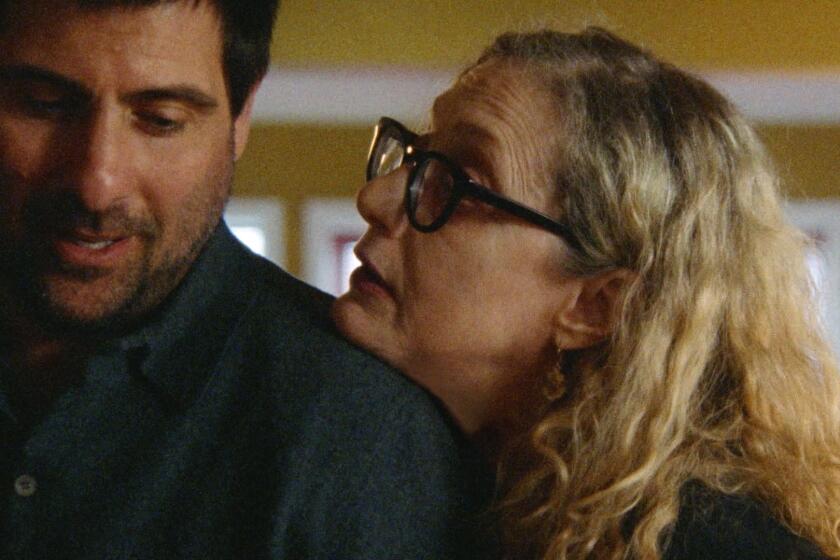Zoltan Pali exits academy museum project as construction phase nears
Zoltan Pali, one of the architects hired to work on the Academy of Motion Picture Arts and Sciences’ future museum, has left the high-profile project.
The departure, which the academy is characterizing as a routine transition, comes in the midst of some critiques of primary architect Renzo Piano’s design, in particular a spherical theater at the corner of Wilshire Boulevard and Fairfax Avenue that Piano calls “the spaceship.”
Pali, of the Culver City firm Studio Pali Fekete Architects, did not return calls for comment Monday. He had been working with Piano at the former May Co. building on the Los Angeles County Museum of Art campus, where the academy is scheduled to break ground on its $300-million, 290,000-square-foot museum later this year, with a planned opening in 2017.
As the project shifts from the design to the construction phase, the academy has decided to hire a local executive architecture firm to carry out Piano’s design, said Bill Kramer, managing director, academy museum and external relations.
“It was simply a decision based on the timing of the project and a desire to bring in a specialist to do this work,” Kramer said Monday.
The academy will name the L.A. architecture firm in the coming days, after contracts are signed, Kramer said.
In April the academy named Kerry Brougher, who spent 14 years as a curator at the Museum of Contemporary Art, as director of the museum, which will include galleries, movie theaters and education space devoted to the art of cinema.
Pali, who recently transformed the Beverly Hills Post Office into the Wallis Annenberg Center for the Performing Arts, was already working on a renovation of the 1939 May Co. building when the academy decided in 2012 to place its long-discussed movie museum there and bring on Piano, a winner of the Pritzker Prize, architecture’s highest honor.
Piano and Pali would seem to have been an ideal partnership. Pali was such a fan of Piano’s work, he named a son after him.
But last week the Architect’s Newspaper reported rumors that Pali was being quietly removed from the project, and over the weekend, the Hollywood Reporter said the two architects had clashed.
Kramer denied the reports of tension between Pali and Piano.
“It’s not accurate,” Kramer said. “They’ve come up with a great design, and it’s really a business decision.”
Some in the architecture world have panned Piano’s early renderings for the museum, which include a 1,000-seat, dome-shaped theater that Times architecture critic Christopher Hawthorne called “an oversized bauble that looks as if it’s just touching down for a short stay.”
“As a piece of urban design, the theater is trapped in a kind of retro-futuristic limbo, with little to say about contemporary Los Angeles,” Hawthorne wrote in his review of Piano’s plans.
The design for the museum has evolved since the academy released those renderings, said Kramer, speaking from Piano’s workshop in Genoa, Italy, where the architect was at work on a final design in consultation with Brougher.
“The rendering that was shown was a high-concept version ... to show the scale and talk about the program of the space, but it did not accurately convey what the sphere will look like,” Kramer said.
Still, changes to the design at this point are likely to be subtle, he said.
“There will be some material choice changes, and we’ll be seeing new drawings in the next couple of weeks, but the scale, scope and program remains the same,” Kramer said.
It’s not unusual for the architecture of cultural institutions to be contentious.
In the late 1990s, the question of whether an executive architect should be hired to translate architect Frank Gehry’s concept for local builders nearly sidetracked the creation of Walt Disney Concert Hall. And in the early 1980s, wrangling over architecture threatened to derail the Museum of Contemporary Art’s downtown headquarters on Grand Avenue when a funder became disenchanted with its architect and sued.
“Museums are difficult because you have the city, curators, trustees, many, many people involved in it,” said Christopher Mount, architecture historian and former architecture and design curator at the Museum of Modern Art in New York. “And this is a complicated museum because it’s about film.”
Mount, who is opening a gallery in the Pacific Design Center in West Hollywood later this month, was diplomatic about the academy museum design, calling it “unusual.” But he said the departure of Pali was not a red flag.
“This happens quite frequently, and I don’t imagine this is a sign of concern,” he said.
He did, however, object to the use of Piano as the primary architect on the job.
“My wish is that some of the local architects would get some of these jobs,” Mount said. “There’s so much talent locally.”
The museum, which the academy had been discussing for decades, is a priority for the more than 6,000-member group of movie industry artists and professionals. Two years into the five-year capital project, two-thirds of the $300-million budget has been raised, Kramer said.
“We are moving along, picking up speed,” academy President Cheryl Boone Isaacs said of the project in an interview in February. “It’s taken us very far to have an actual physical space to discuss the future and the plans through the next four years.”
Last week the academy renewed the three-year contract of its chief executive, Dawn Hudson, who has played a key role in the development of the project, including advocating for Piano.
Times staff writer Mike Boehm contributed to this report.
More to Read
Only good movies
Get the Indie Focus newsletter, Mark Olsen's weekly guide to the world of cinema.
You may occasionally receive promotional content from the Los Angeles Times.











